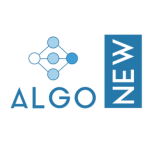Over the past few years, large language models (LLMs) have dominated the conversation around Artificial Intelligence.

 Their power, reasoning ability, and versatility have driven unprecedented transformation across sectors such as finance, healthcare, and communications. However, while the industry remains fixated on scale, a quietly emerging trend is changing the rules of the game: Small Language Models (SLMs).
Their power, reasoning ability, and versatility have driven unprecedented transformation across sectors such as finance, healthcare, and communications. However, while the industry remains fixated on scale, a quietly emerging trend is changing the rules of the game: Small Language Models (SLMs).
A recent white paper by researchers at NVIDIA and the Georgia Institute of Technology argues that smaller models are not only more efficient and sustainable—they may well become the true engine of the next generation of autonomous systems. The key lies in their balance of performance, cost, and operational flexibility, three factors that are redefining how companies adopt AI.
LLMs represent the pinnacle of technological complexity—but also its main limitation. Training and maintaining a massive model demands enormous energy consumption, expensive infrastructure, and dependence on external providers. By contrast, SLMs are engineered to be lighter, faster, and more precise on well-defined tasks.
If we look at corporate needs, most automatable processes don’t require general intelligence. They call for specialized models capable of executing highly specific actions with accuracy: analyzing contracts, classifying emails, processing claims, or generating internal reports. In this context, SLMs deliver equal or superior outcomes with much lower latency and dramatically reduced operating costs.
This technology philosophy marks a shift from brute force to focused intelligence—a more pragmatic AI designed to solve real business problems. That is precisely the approach we’ve implemented at AlgoNew.com, where we develop proprietary AI solutions for process automation and decision support. Our model combines Small Language Models for specialized tasks with modular architectures that scale efficiently, ensuring reliable results and significant savings in operational and energy costs.
The Era of Distributed Intelligence
The rise of AI agents—systems capable of acting autonomously and cooperating with one another—has accelerated the move toward more modular architectures. Instead of relying on a single giant model to do everything, companies are beginning to deploy ecosystems of small models, each specialized in a specific function.
Distributed intelligence not only optimizes performance; it also boosts resilience and adaptability. It allows teams to update, replace, or improve components without disrupting the whole, and it significantly reduces latency and energy consumption.
The result is more flexible, scalable AI aligned with each organization’s operational needs—an intelligence that doesn’t seek to centralize power, but to distribute it efficiently.
Beyond the technical advantages, the pivot toward small models has a profound economic dimension. Today’s dependence on very large models and global platforms raises barriers to innovation, limiting access to advanced AI for small and medium-sized businesses.
SLMs remove many of those obstacles. They require less infrastructure, can run on local servers, and reduce energy and maintenance costs. This efficiency enables a real democratization of AI, where access no longer depends on the size or budget of the organization.
Moreover, the ability to develop in-house models and run them in controlled environments strengthens technological sovereignty and corporate data protection—aspects that are increasingly relevant in the European regulatory context.
Toward Sustainable, Strategic AI
Sustainability has become a strategic variable in technology decision-making. In this sense, SLMs offer an undeniable advantage: lower energy consumption and the ability to operate without massive data centers make them a highly viable long-term option.
 The future of AI will not be dominated exclusively by gigantic models, but by hybrid ecosystems that combine the power of LLMs with the efficiency of SLMs. Intelligence will cease to be monolithic and will become a network of collaborative models, each optimized for a specific purpose.
The future of AI will not be dominated exclusively by gigantic models, but by hybrid ecosystems that combine the power of LLMs with the efficiency of SLMs. Intelligence will cease to be monolithic and will become a network of collaborative models, each optimized for a specific purpose.
The question is no longer “which single model can do it all,” but “which combination of models can do it better, faster, and at lower cost.” In that scenario, Small Language Models stand out as one of the pillars on which the next generation of intelligent solutions will be built.
True disruption won’t come only from pushing the boundaries of computational capacity, but from applying intelligence in a strategic, sustainable, and business-aligned way.

Discover All Our AI and NLP-Powered Intelligent Technology Solutions for Professionals!
Do you already know which Algonew technology your business needs? Email us at marketing@algonew.com or fill out our contact form here, describing your business type or industry, the tasks or objectives you want to achieve, and which Algonew solution you’d like to test.




